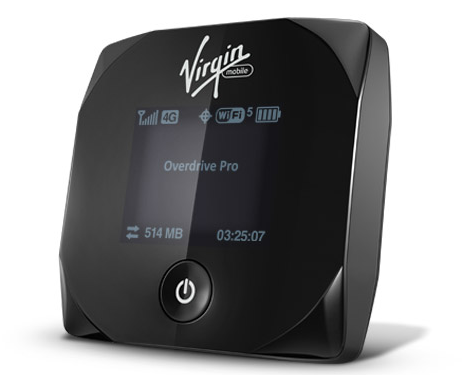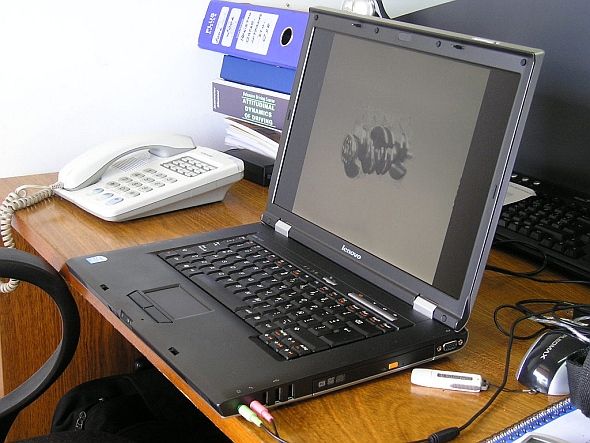This article was updated January 3rd 2016
Do you want to give multiple wireless gadgets on-the-go internet access? Are you sick of getting ripped off by wireless hotspot tethering and want Wi-Fi without an ISP? There’s a variety of technologies that can help you – the two most prominent being MVNO networks and portable hotspot Wi-Fi devices. By combining these two technologies, you can cheaply run around town with a bag full of Internet-ready devices, as well as share your portable Internet with friends. You can even operate a phone from a Wi-Fi (or Mi-Fi) network using software which functionally converts raw data into voice minutes and SMS.
It’s not simply a new way of doing things – it’s a lifestyle change requiring a mixture of software and hardware. However, in the end, rolling a personal Wi-Fi network is an absolute steal. You can even make money. The trick is in finding the right software, MVNO plans, and gadgets.
Smartphone Tethering: Create a Wi-Fi Hotspot
The most common, but least user-friendly, method of setting up a portable internet access point is by configuring what’s known as wireless "tethering." A tether allows you to transform a mobile phone into a portable Wi-Fi hotspot, although with large caveats (unless you own a Nexus phone). In the past, telecom operators frowned on this practice, often billing users for using their phone without purchasing the carrier’s bloated and outrageous tethering devices. While the government ruled that forcing customers to buy separate tethering plans was illegal, carriers still manage to find all sorts of nasty ways to discourage consumers from using their mobile devices to tether.
Advantages:
- The biggest advantage of a single-device tether is simplicity. Rather than carrying multiple devices, you only need your phone (and another device with Wi-Fi).
- Offers the lowest total price, since it uses your current data plan. If you are shopping for a provider, consider using T-Mobile’s $30 a month prepaid plan (at the bottom of the page), which comes with 100 minutes of talk and unlimited data (technically limited to around 5GB before throttling).
Disadvantages:
- Carriers hate you when you use a single-device tether. Some will even try to block you from using their service "illegally." In recent years, however, carriers began easing up on tethering restrictions. Even so, many still try to prevent you from tethering using your contract smart device.
- Requires a smartphone or data-enabled tablet with tether capabilities.
- When tethered, your phone will use both Wi-Fi and 3G simultaneously, which are the two most battery intensive components of your phone. Using both wireless radios results in significant battery drain and necessitates plugging your smartphone into a wall socket.
- Potential difficulty making phone calls.
- Many phones purchased from carriers, including Android and iOS devices, will require rooting or jailbreaking combined with an application that enables tethering. Without a Nexus smartphone, tethering can be very complicated.
Fortunately, with a Nexus phone, you can natively create a hotspot Wi-Fi hub. The operating system then disguises the network traffic to appear as originating from the cell phone, rather than from other devices. Thus, to the carrier at least, you seem to use data only from your phone. For those owning a phone that blocks tethering, an app might solve your problems.
Mi-Fi Wi-Fi Hotspot
A Mi-Fi device creates a portable Wi-Fi hotspot. Think of it as a mobile router for a cellular data feed. Many carriers offer locked-down, contract-only Mi-Fi devices. These devices offer good value at the point-of-sale, although the monthly fees might exceed prepaid plans. Fortunately, some companies sell these devices unlocked (or untethered, if you like puns) from any GSM carrier. I advise using a high data capacity plan from an MVNO, in combination with an unlocked Mi-Fi device. Straight Talk is one of the first carriers that come to mind, although many others exist. Again, T-Mobile's $30-per-month prepaid plan remains at the top of the spectrum.
For those of you who love signing long-term contracts, Verizon offers 5GB plans for 4G Mi-Fi devices – ignoring legal fetters, they offer excellent network reliability and data speed. On the other hand, you can get a contract-free Virgin Mobile portable hotspot for $50. The best contract from Virgin costs $55 a month with a 6GB data cap.
It’s also worth mentioning that unlocked devices combine quite well with prepaid plans from MVNOs, particularly pay-as-you-go plans from carriers, such as Airvoice Wireless. The monthly upkeep of a pay-go plan can run as little as $10 for three months. Before purchasing a plan, however, make sure you know the basics.
Advantages:
- Greatly reduces the price of getting multiple devices online. Rather than paying for multiple cellular data-enabled devices, you can instead buy a single plan and leech bandwidth from it.
- This method can provide the easiest setup of a Mi-Fi hotspot, provided you don’t try to use VOIP and Google Voice.
Disadvantages:
- Data networks do not do a particularly good job of maintaining a high-quality connection while in transit. Thus, call quality over VOIP will suffer when traveling via automobile or train.
- A separate Mi-Fi device requires its battery, which necessitates charging and management.
- $50 a month for 6GB of data may offer too little an allotment for heavy users.
- The use of a Mi-Fi hotspot can sometimes be very complicated, depending on how you configure your device. For example, using Google Voice combined with TalkaTone or Skype may include other fees and a time-consuming setup process. However, keep in mind that if you follow Chris's directions, TalkaTone can allow you to receive free phone calls.
PCMCIA or USB Data Card WiFi Hotspot
Some carriers offer USB modems (or PCMCIA modems for older laptops) which provide mobile internet access for your notebook. These devices allow your laptop to “reverse-tether”, which permits the creation of a portable hotspot from a PC.
Advantages:
- Using a USB modem bypasses reliance on a smartphone – therefore, you can easily take calls without disturbing any part of your portable hotspot.
- A laptop can hold a charge longer than a smartphone, thanks to its much larger battery.
- Laptops handle the burden of managing a hotspot with greater efficiency than a smartphone.
Disadvantages:
- Compatibility issues mean not all wireless adapters are compatible with creating a hotspot from a laptop.
- A lengthy setup process involving the command line. If you don’t like computers, then this option isn’t for you.
Conclusion
You don’t have to sign a two-year contract to get your mobile hotspot Wi-Fi service. Three methods exist for getting all your mobile devices online: root your phone and install tethering software, purchase a Mi-Fi device and data plan or use your laptop with a data device to reverse-tether.
All methods come with distinct advantages and disadvantages. Personally, I prefer using a Nexus smartphone to tether, but that’s because its particular advantages suit my needs perfectly. If you do elect to go with a portable hotspot, make sure you select a suitable plan.
Decided that creating your own hotspot isn't for you? Check out how to find free Wi-Fi hotspots near you.
Special thanks to Richard Paddock for the tip.
Images: Laptop, Phone and Fireworks via MorgueFile.com; Wi-Fi Hotspot via Shutterstock.com; device images via their respective websites.




